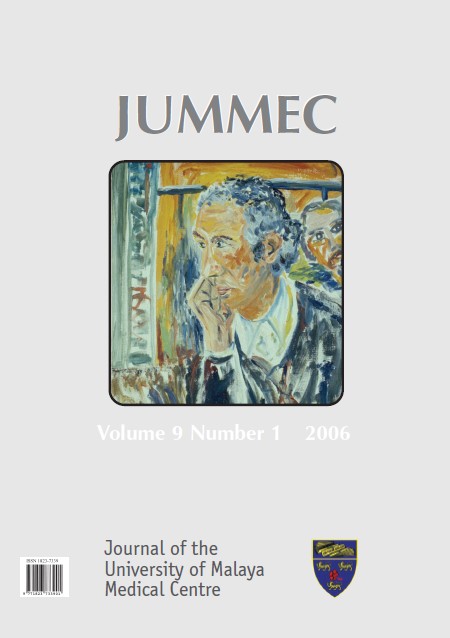DIAGNOSING ANGINA USING A SIMPLE NEURAL NETWORK ARCHITECTURE
Abstract
The aim of the study was to research the use of a simple neural network in diagnosing angina in patients complaining of chest pain. A total of 887 records were extracted from the electronic medical record system (EMR) in Selayang Hospital, Malaysia. Simple neural networks (simple perceptrons) were built and trained using a subset of 470 records with and without pre-processing using principal components
analysis (PCA). These were subsequently tested on another subset of 417 records. Average sensitivity of 80.75% (95% CI 79.54%, 81.96%), specificity of 41.64% (95% CI 40.13%, 43.15%), PPV of 46.73% (95% CI 45.20%, 48.26%) and NPV of 77.39% (95% CI 76.11%, 78.67%) were achieved with the simple perceptron. When PCA pre-processing
was used, the perceptrons had a sensitivity of 1.43% (95% CI 1.06%, 1.80%), specificity of 98.32% (95% CI 97.92%, 98.72%), PPV of 32.95% (95% CI 31.51%, 34.39%) and NPV of 61.33% (95% CI 59.84%, 62.82%). These results show that it is possible for a simple neural network to have respectable sensitivity and specificity levels for angina.
Downloads
Downloads
Published
Issue
Section
License
All authors agree that the article, if editorially accepted for publication, shall be licensed under the Creative Commons Attribution License 4.0 to allow others to freely access, copy and use research provided the author is correctly attributed, unless otherwise stated. All articles are available online without charge or other barriers to access. However, anyone wishing to reproduce large quantities of an article (250+) should inform the publisher. Any opinion expressed in the articles are those of the authors and do not reflect that of the University of Malaya, 50603 Kuala Lumpur, Malaysia.


